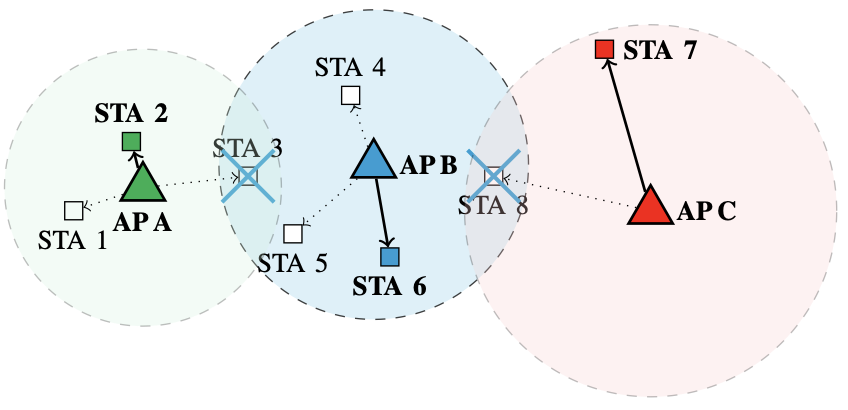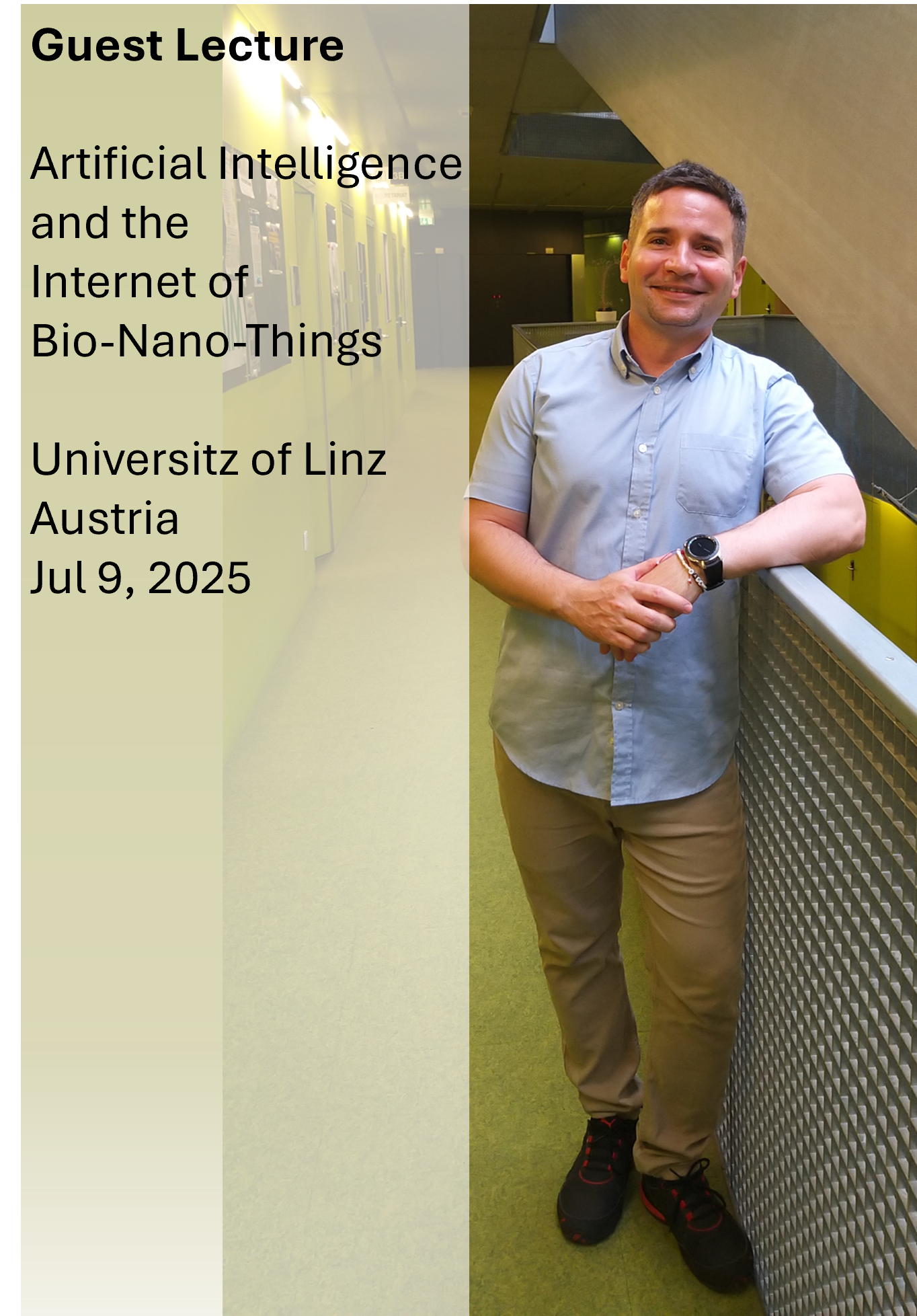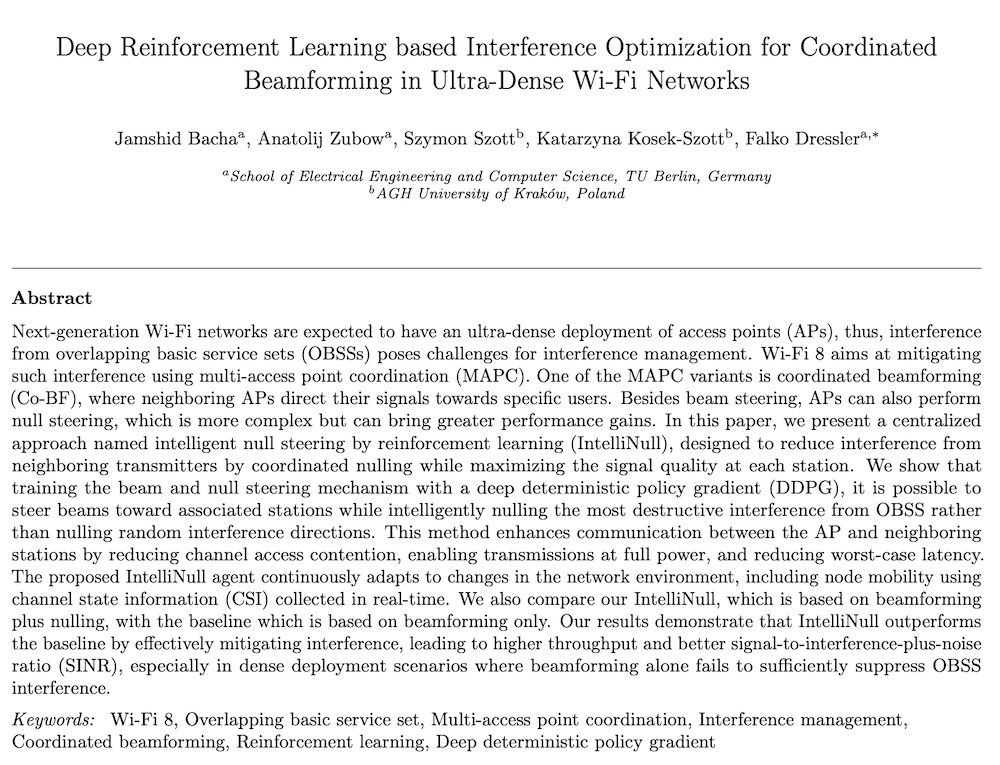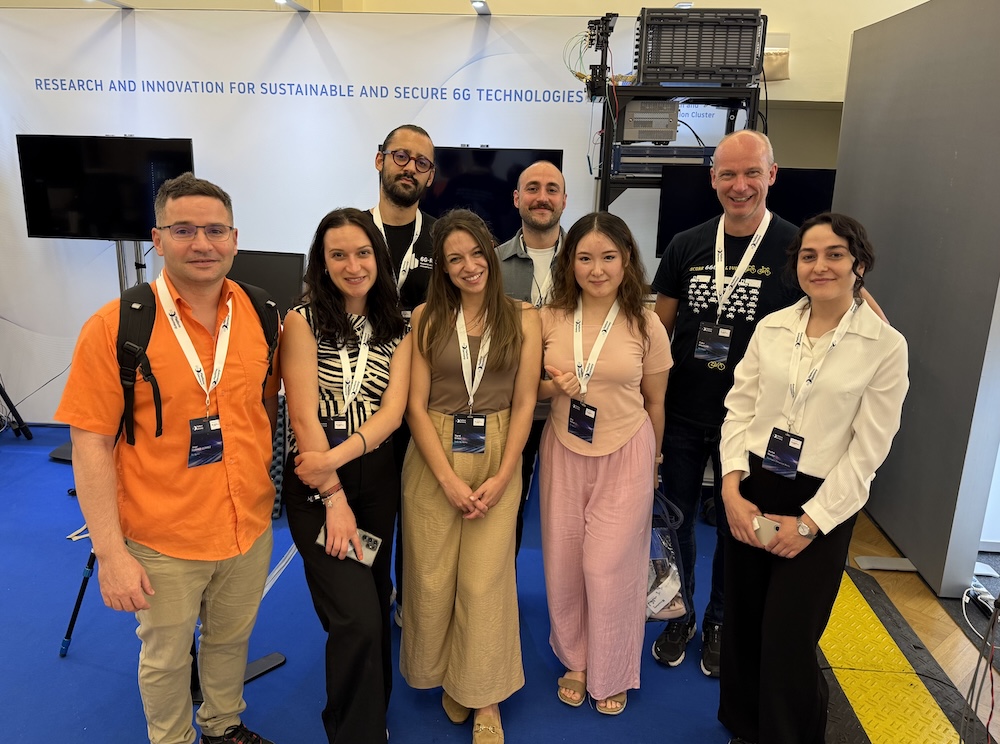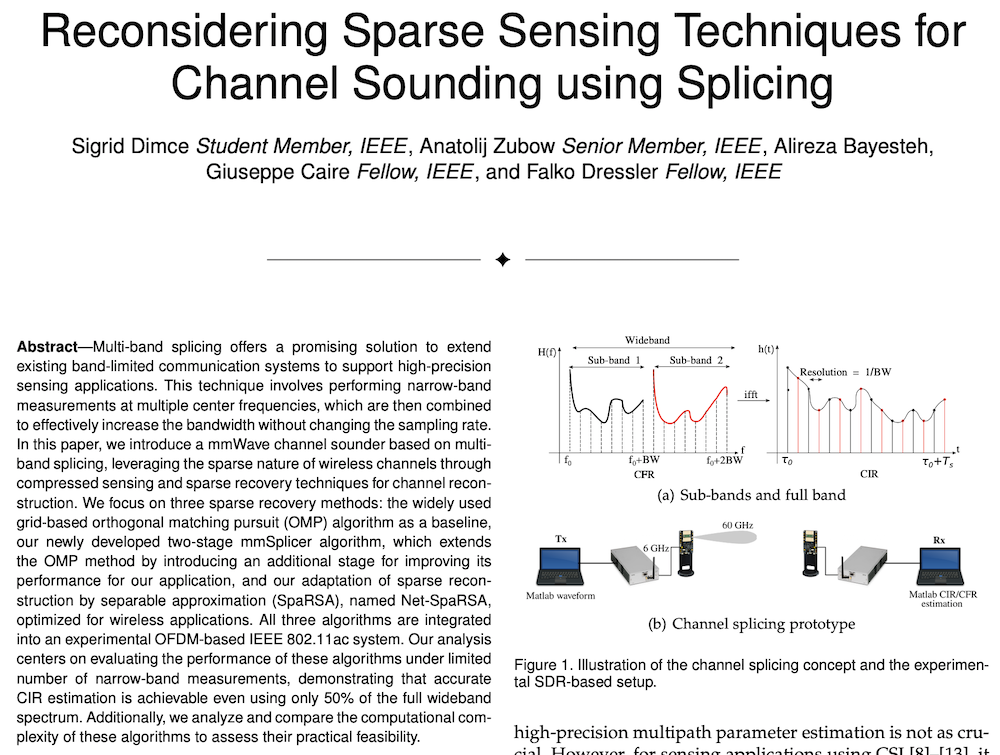Literature Database Entry
bloessl2018physical
Bastian Bloessl, "A Physical Layer Experimentation Framework for Automotive WLAN," PhD Thesis, Department of Computer Science, Paderborn University (UPB), June 2018. (Advisor: Falko Dressler; Referees: Falko Dressler, Matthias Hollick and Renato Lo Cigno)
Abstract
Future cars will be equipped with communication modules that allow them to exchange information directly with each other and potentially infrastructure nodes, forming a Vehicular Ad Hoc Network (VANET). Through communication, cars will be able to coordinate and drive cooperatively, which will make transportation safer, more efficient, and more comfortable than ever before. One of the considered technologies for vehicular networks is IEEE 802.11p, a slightly modified version of consumer Wireless LAN (WLAN) that was adapted to better fit the characteristics of vehicular environments. While the decision to rely on readily available technology might ease market introduction, it also raises the question whether a physical layer that was designed for relatively static indoor environments can provide reasonable performance in highly dynamic VANETs. Using Software Defined Radios (SDRs), i.e., fully programmable radios, we are able to address this question, as they allow us to closely examine and modify the physical waveform. We made SDR accessible for research on VANETs by imple- menting the first IEEE 802.11p transceiver for GNU Radio, a popular real-time signal processing framework for use in SDRs. Performing all signal processing on a PC, our transceiver is well-suited for rapid prototyping and can be used for simulations as well as real-world experiments, offering a seamless switch from theory to practice. In the first part of the thesis, we detail the design of our IEEE 802.11p transceiver, study its computational complexity, and present results from thorough validations through simulations and interoperability tests. We furthermore show that it is possible to support time-critical functionalities like channel access and automatic gain control without giving up the advantages of a PC implementation. In the second part, we use our transceiver to address selected research questions in VANETs. Here, we conduct field tests to compare the performance of different devices and algorithms in realistic environments and study the impact of noise and intra-technology interference on IEEE 802.11p. Finally, we show a use-case for our transceiver that goes beyond signal processing: With full access to all information down to the physical layer, we develop a novel, robust attack on the location privacy of vehicles and study its impact through network simulations.
Quick access
Original Version ![]() (at publishers web site)
(at publishers web site)
Authors' Version ![]() (PDF on this web site)
(PDF on this web site)
BibTeX ![]()
Contact
BibTeX reference
@phdthesis{bloessl2018physical,
author = {Bloessl, Bastian},
doi = {10.17619/UNIPB/1-347},
title = {{A Physical Layer Experimentation Framework for Automotive WLAN}},
advisor = {Dressler, Falko},
institution = {Department of Computer Science},
location = {Paderborn, Germany},
month = {6},
referee = {Dressler, Falko and Hollick, Matthias and Lo Cigno, Renato},
school = {Paderborn University (UPB)},
type = {PhD Thesis},
year = {2018},
}
Copyright notice
Links to final or draft versions of papers are presented here to ensure timely dissemination of scholarly and technical work. Copyright and all rights therein are retained by authors or by other copyright holders. All persons copying this information are expected to adhere to the terms and constraints invoked by each author's copyright. In most cases, these works may not be reposted or distributed for commercial purposes without the explicit permission of the copyright holder.
The following applies to all papers listed above that have IEEE copyrights: Personal use of this material is permitted. However, permission to reprint/republish this material for advertising or promotional purposes or for creating new collective works for resale or redistribution to servers or lists, or to reuse any copyrighted component of this work in other works must be obtained from the IEEE.
The following applies to all papers listed above that are in submission to IEEE conference/workshop proceedings or journals: This work has been submitted to the IEEE for possible publication. Copyright may be transferred without notice, after which this version may no longer be accessible.
The following applies to all papers listed above that have ACM copyrights: ACM COPYRIGHT NOTICE. Permission to make digital or hard copies of part or all of this work for personal or classroom use is granted without fee provided that copies are not made or distributed for profit or commercial advantage and that copies bear this notice and the full citation on the first page. Copyrights for components of this work owned by others than ACM must be honored. Abstracting with credit is permitted. To copy otherwise, to republish, to post on servers, or to redistribute to lists, requires prior specific permission and/or a fee. Request permissions from Publications Dept., ACM, Inc., fax +1 (212) 869-0481, or permissions@acm.org.
The following applies to all SpringerLink papers listed above that have Springer Science+Business Media copyrights: The original publication is available at www.springerlink.com.
This page was automatically generated using BibDB and bib2web.

